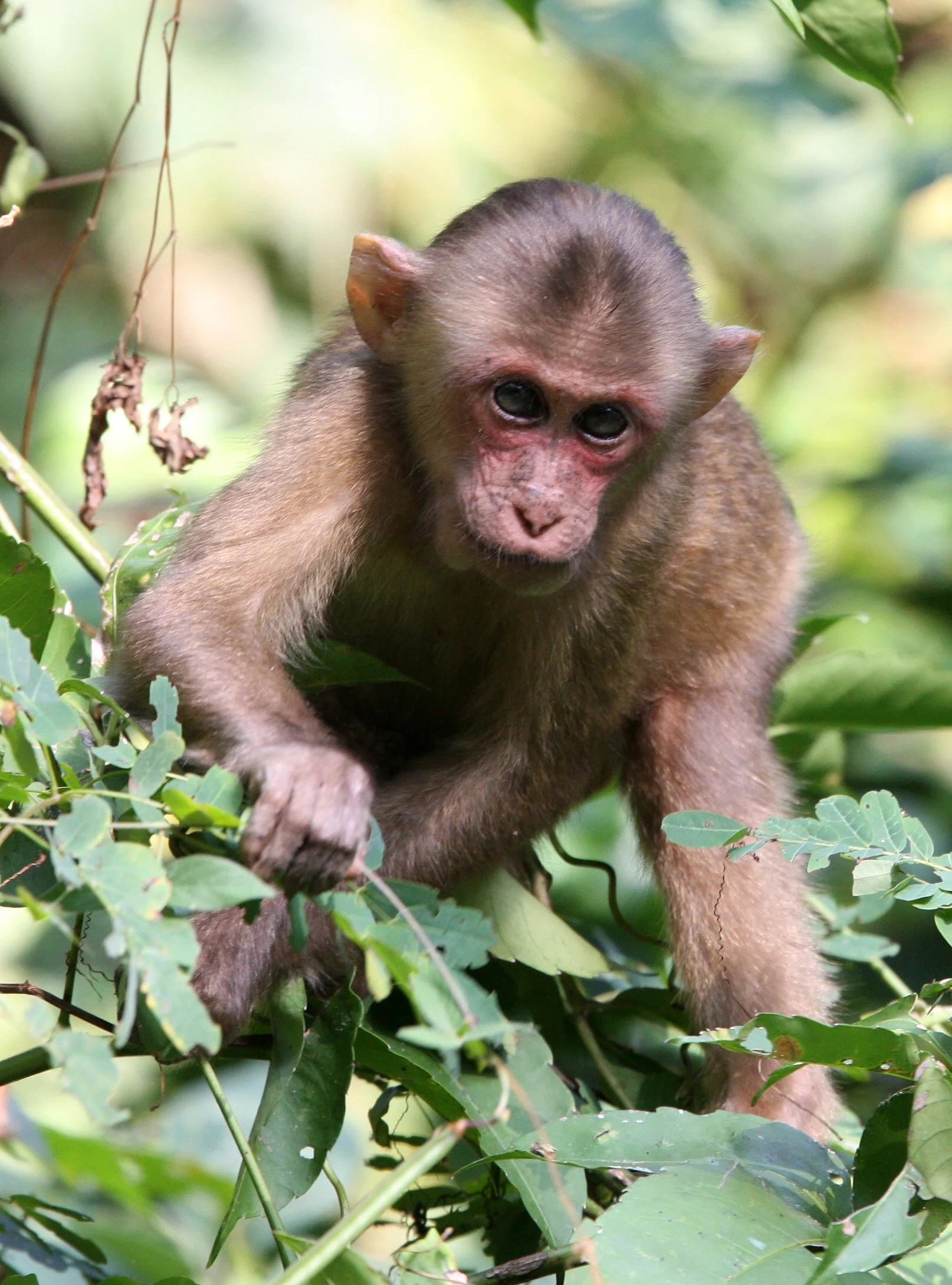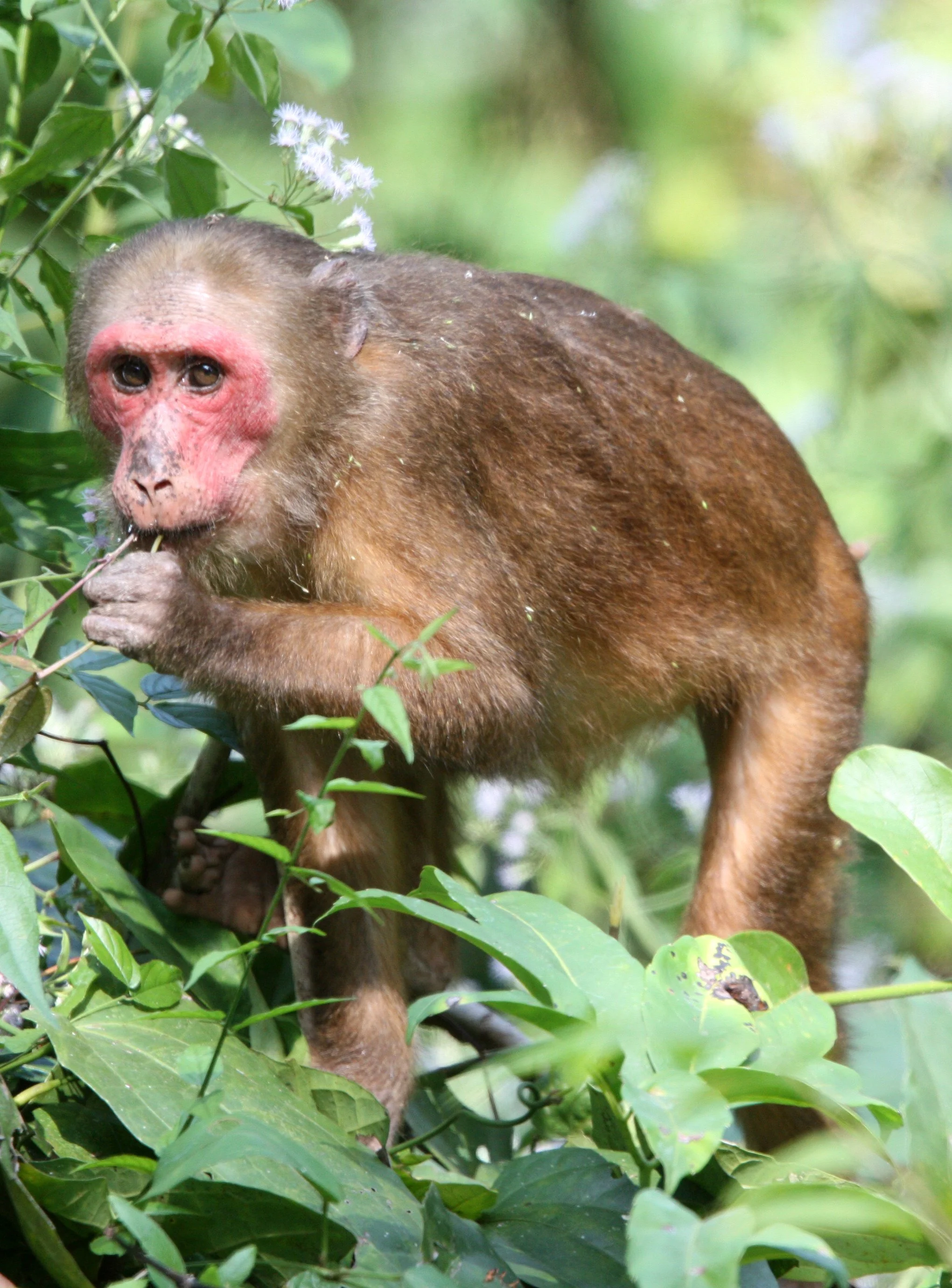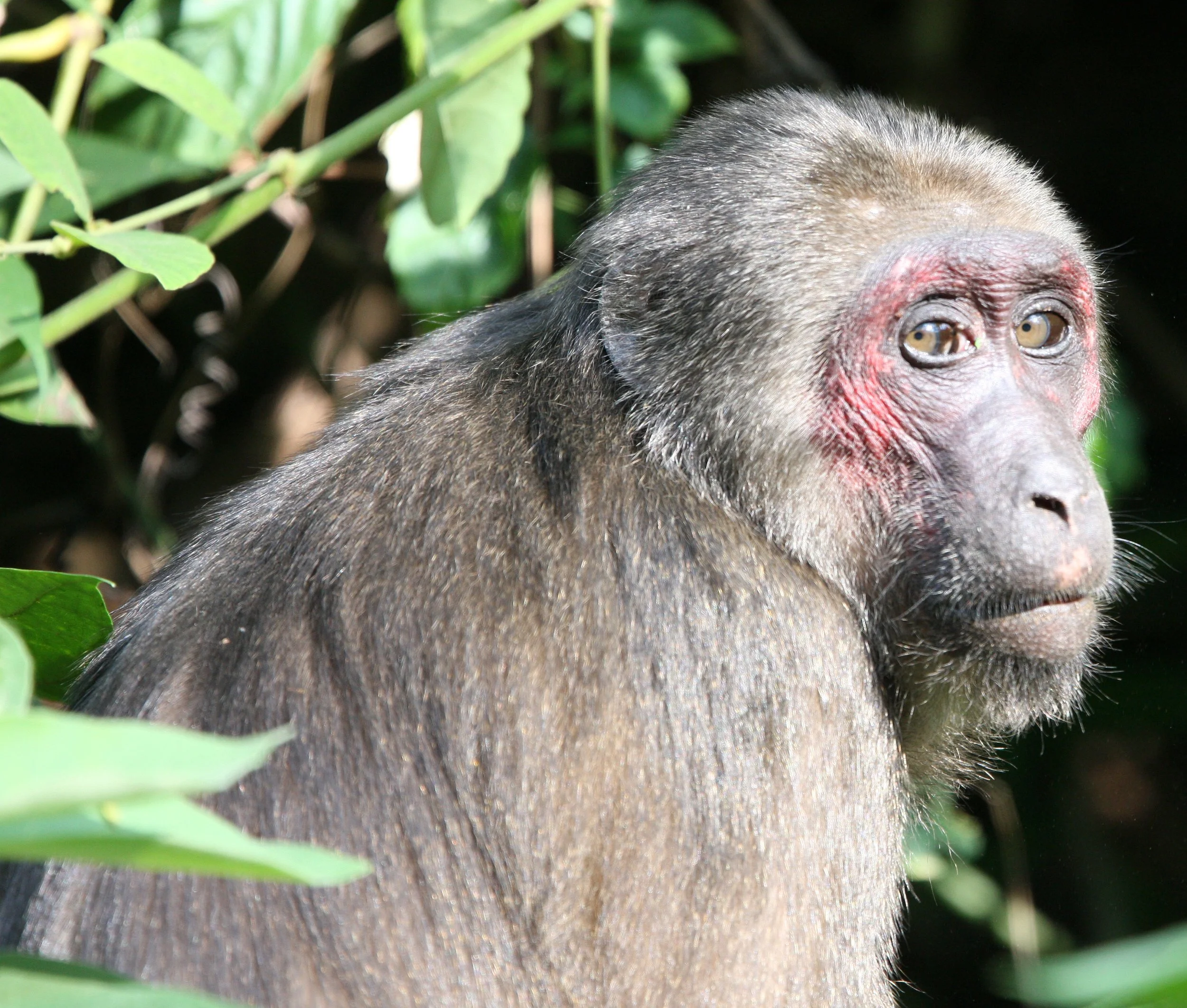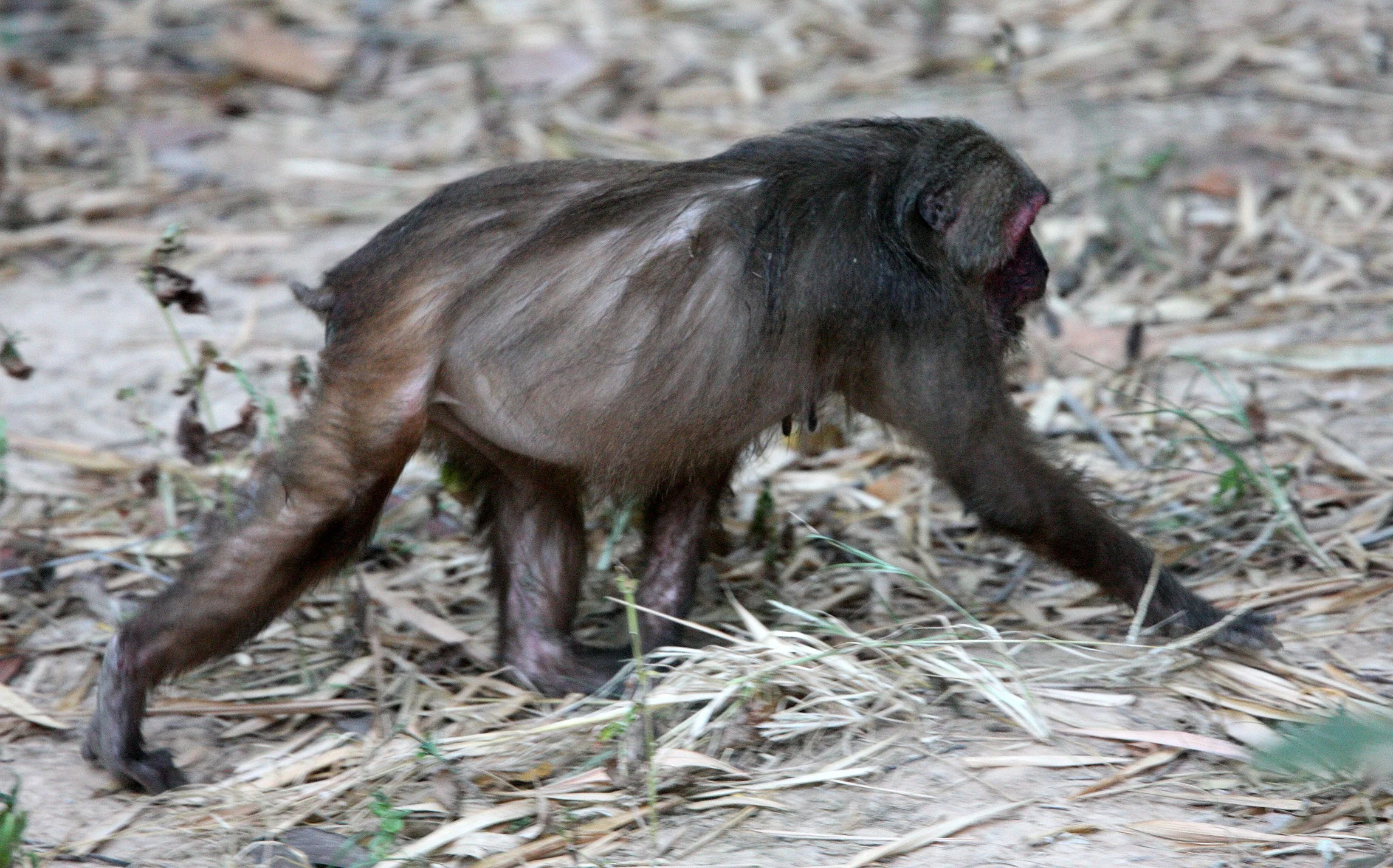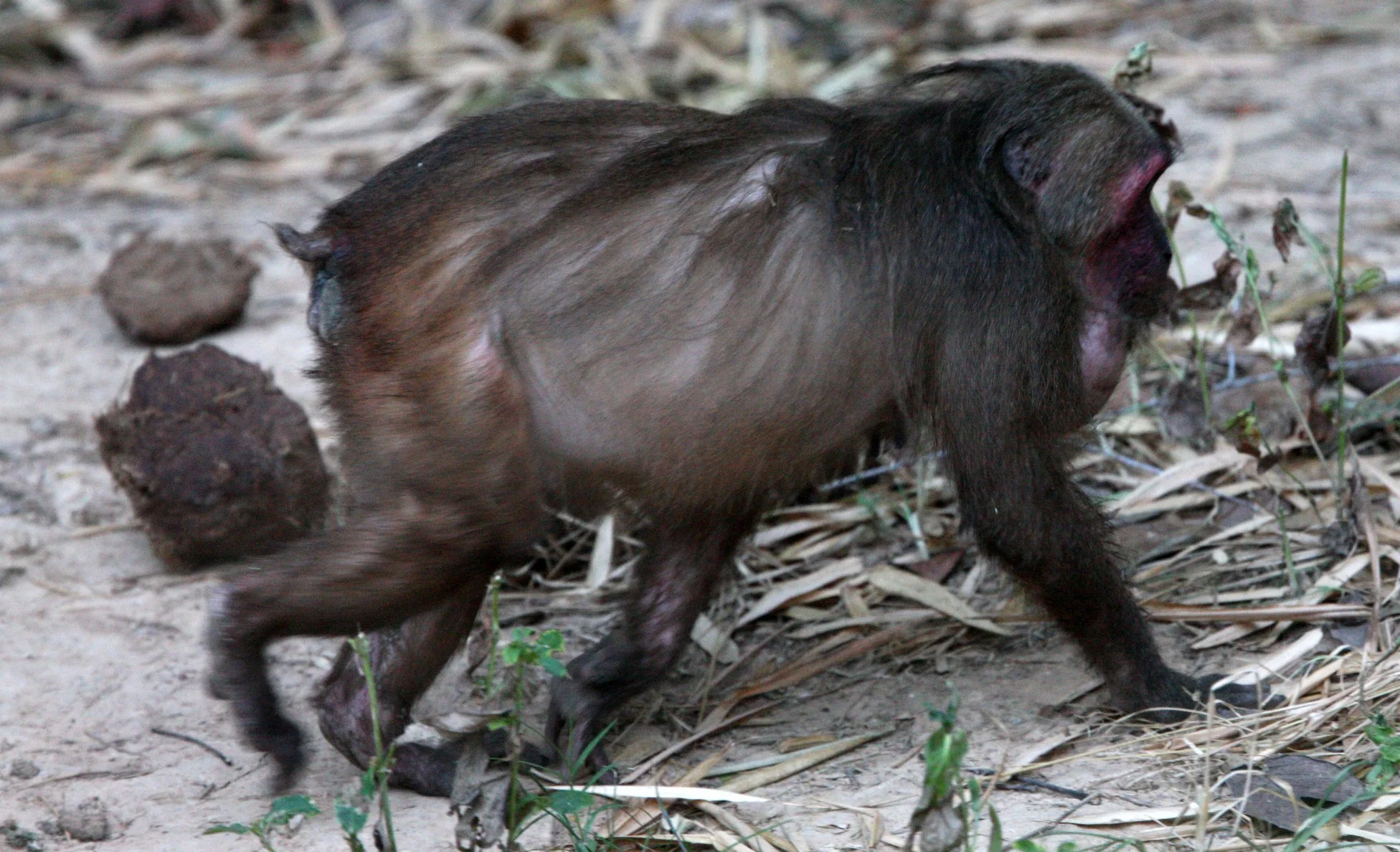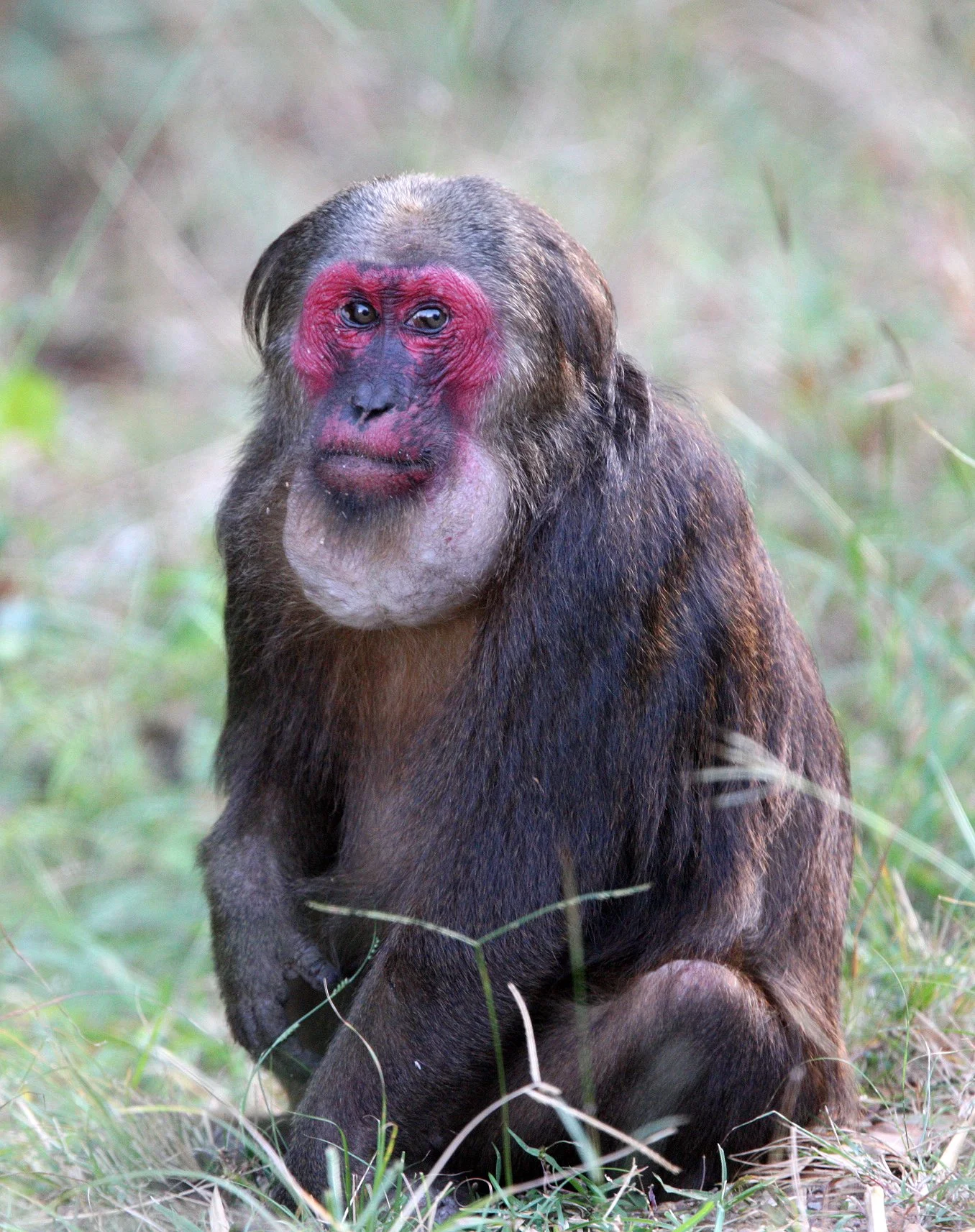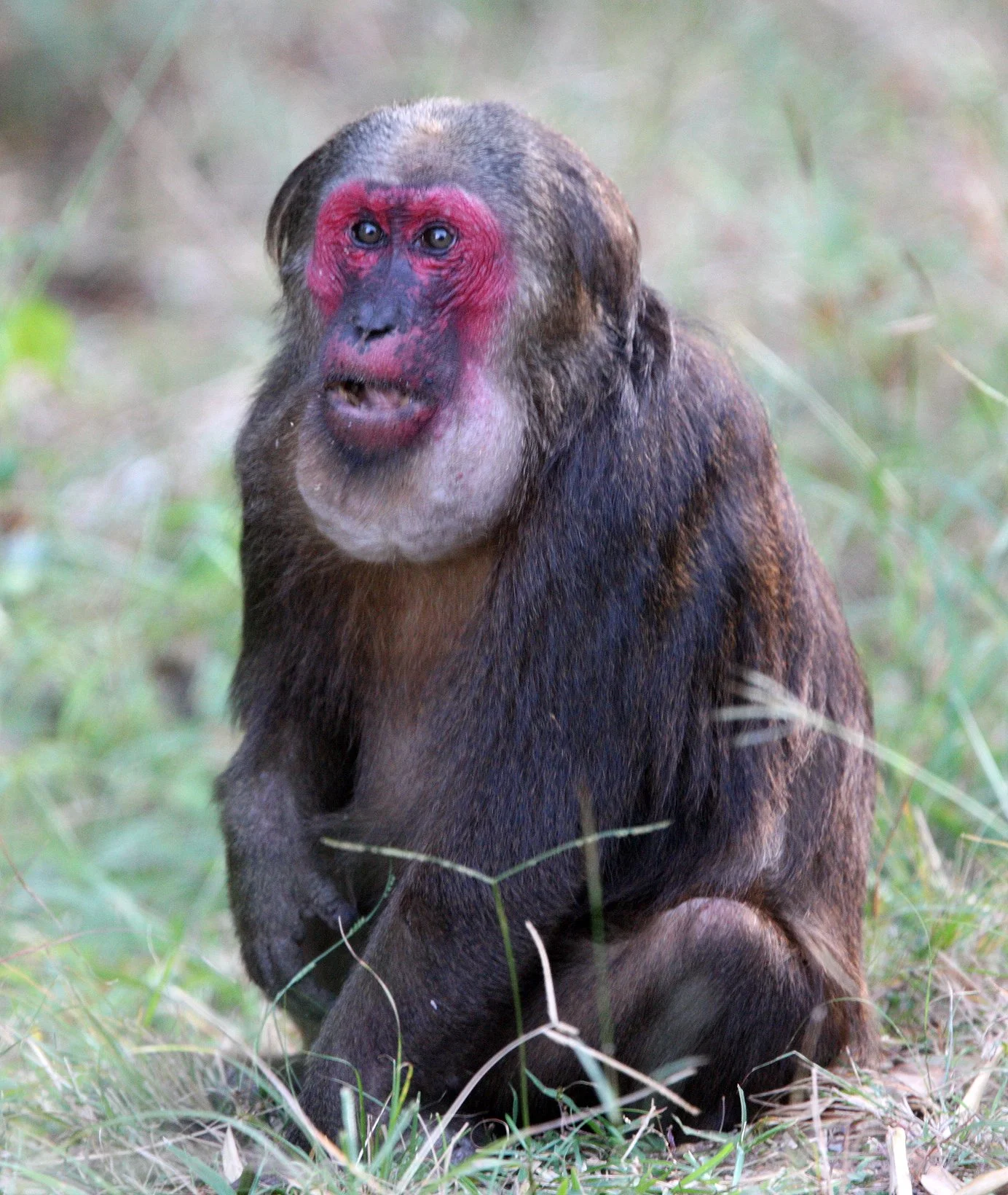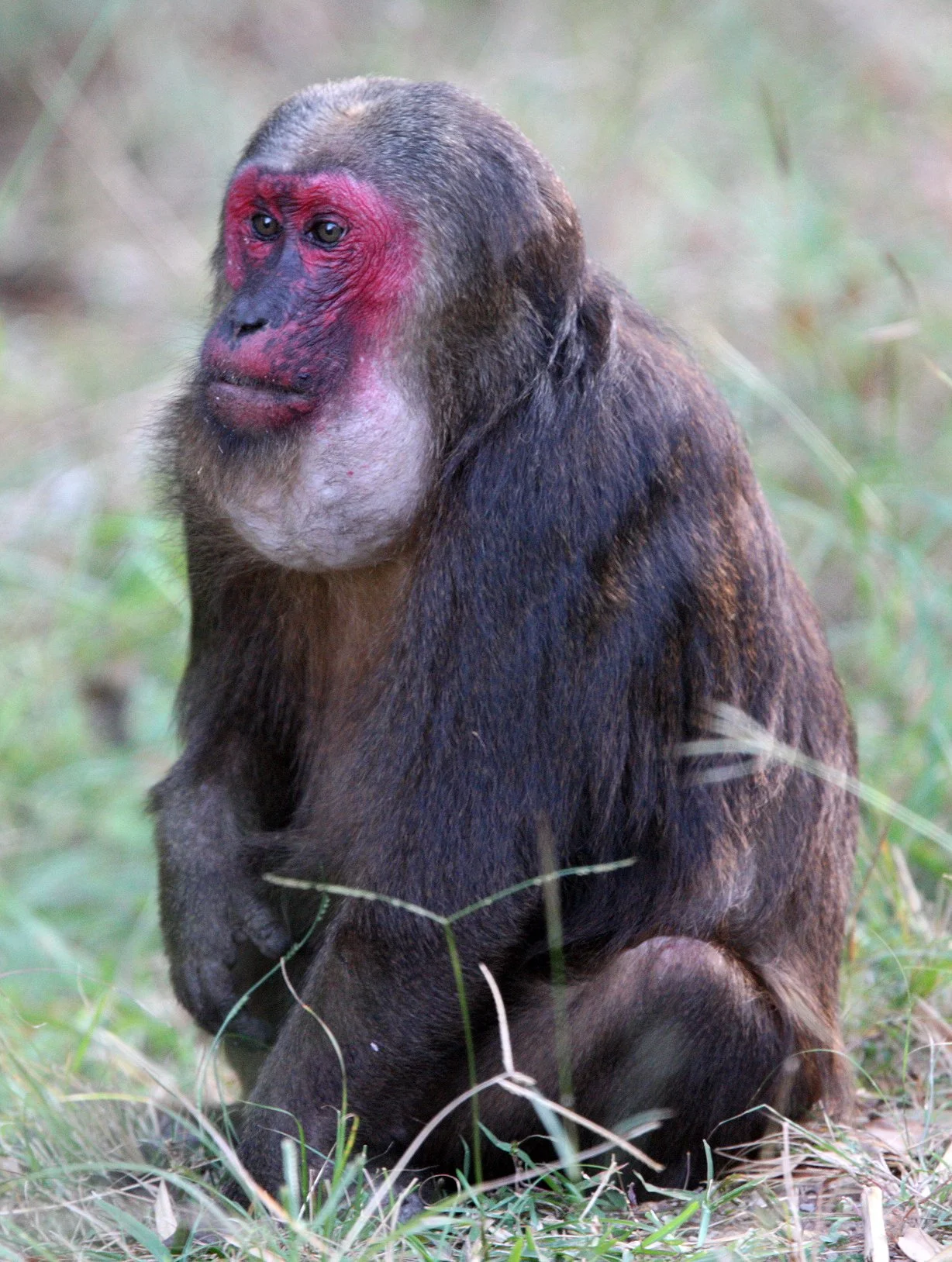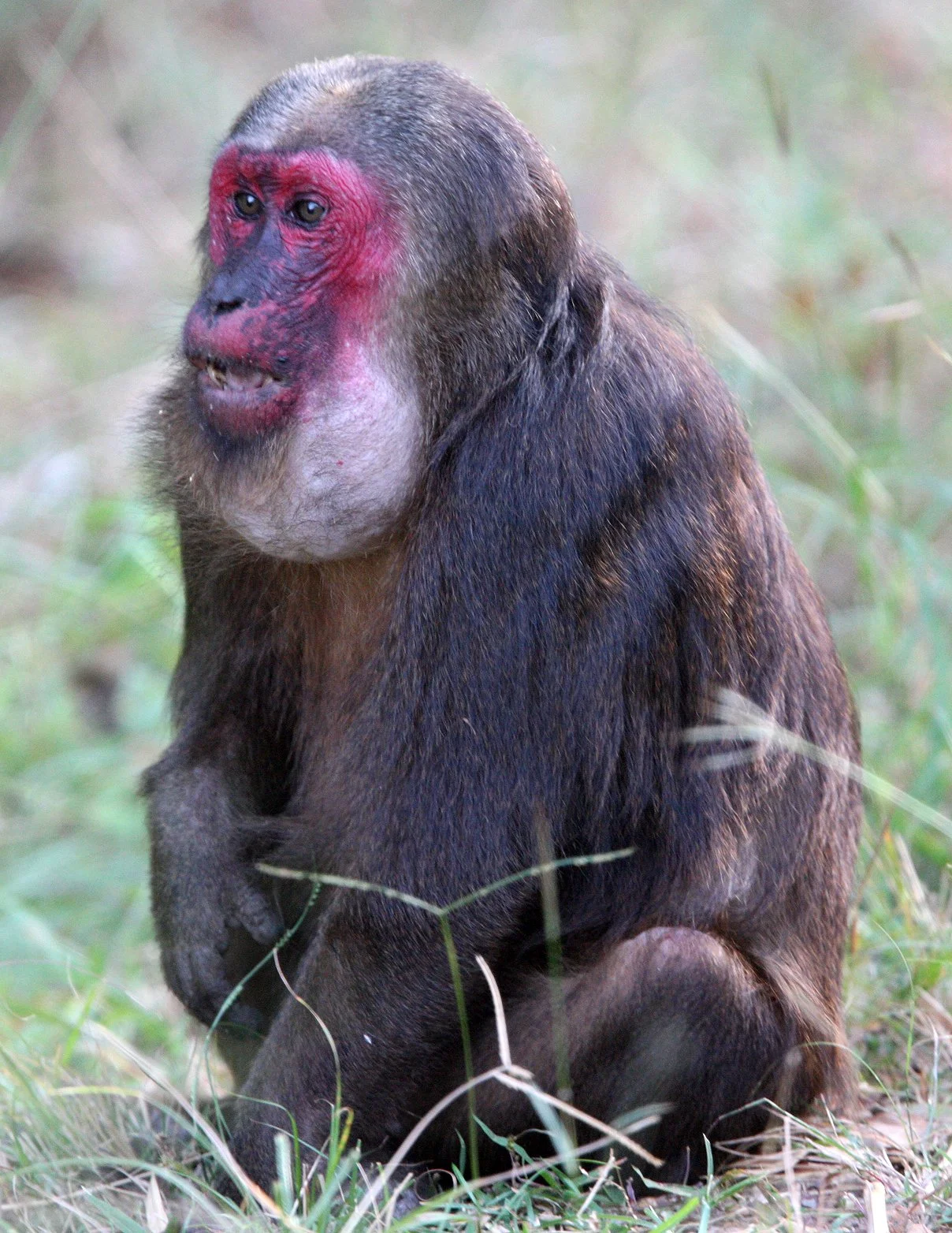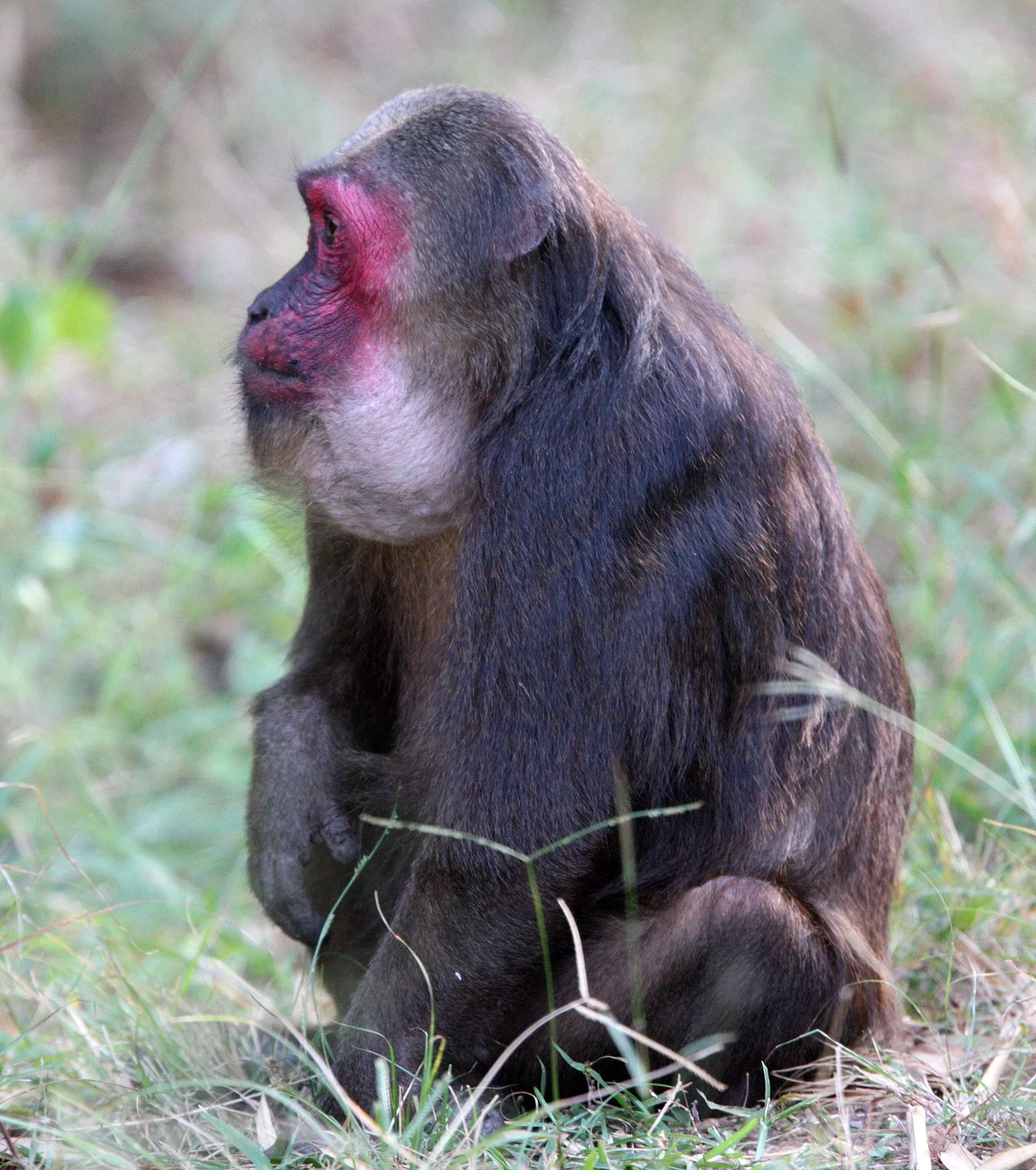The Stump-tailed Macaque (Macaca arctoides), also called the bear macaque, is a species of macaque native to South Asia and Southeast Asia. In India, it occurs south of the Brahmaputra River, in the northeastern part of the country. Its range in India extends from Assam and Meghalaya to eastern Arunachal Pradesh, Nagaland, Manipur, Mizoram and Tripura.
It is primarily frugivorous, but eats many types of vegetation, such as seeds, leaves and roots, but also hunts freshwater crabs, frogs, bird eggs and insects.
The stump-tailed macaque has long, thick, dark brown fur covering its body, but its face and its short tail, which measures between 32 and 69 mm (1.3 and 2.7 in), are hairless. Infants are born white and darken as they mature. As they age, their bright pink or red faces darken to brown or nearly black and lose most of their hair. Males are larger than females, measuring 51.7–65 cm (20.4–25.6 in) long and weighing 9.7–10.2 kg (21–22 lb), while females measure 48.5–58.5 cm (19.1–23.0 in) and weigh 7.5–9.1 kg (17–20 lb). Males' canine teeth, which are important for establishing dominance within social groups, are more elongated than those of the females. Like all macaques, this species has cheek pouches to store food for short periods of time.
This Old World monkey travels quadrupedally, usually on the ground, as it is not very agile in trees. It is generally found in evergreen tropical and subtropical moist broadleaf forests, at different elevations depending on the amount of rainfall in the area. It depends on rainforests for food and shelter, and is not found in dry forests except where it ranges in the Himalayan region of India, only spending time in secondary forests if it is bordering old-growth forest tropical forests. With its thick fur, the stump-tailed macaque can live in cold climates at elevations up to 4,000 m (13,000 ft).[6] It is distributed from northeastern India and southern China into the northwest tip of West Malaysia on the Malay Peninsula.[1][5] It is also found in Burma, Thailand, Laos, Cambodia and Vietnam. It is possibly extinct in Bangladesh. No global population estimate is available. In Cambodia, a declining population of 230 is reported from Keo Seima Wildlife Sanctuary.
A study population was introduced to Tanaxpillo, an uninhabited island in Lake Catemaco, Veracruz, Mexico in 1974, where it ranges in seminatural conditions. Most information on the species comes from the introduced population on Tanaxpillo and other captive settings, as few long-term studies have been conducted on the stump-tailed macaque in the wild.










































































































































































